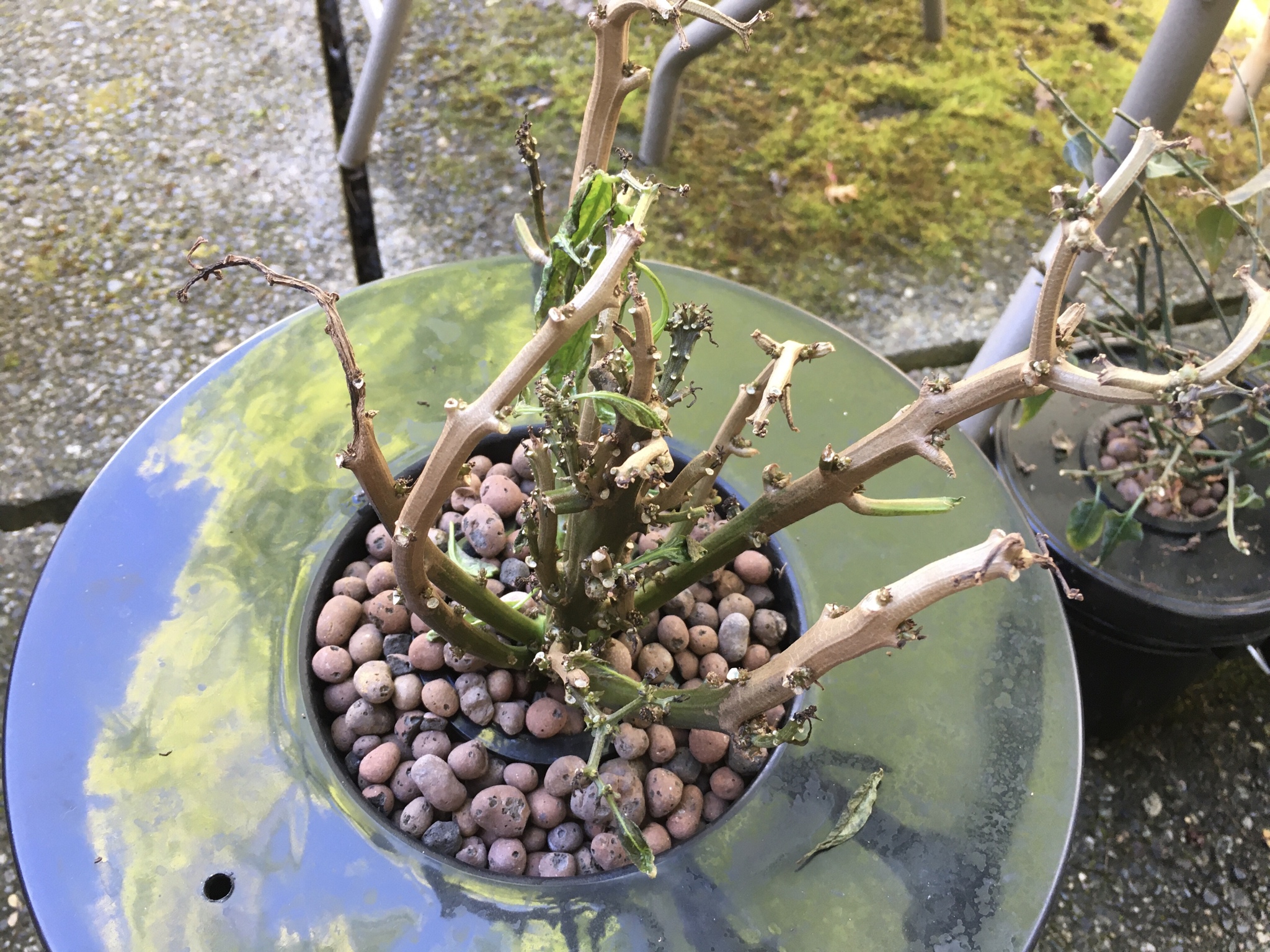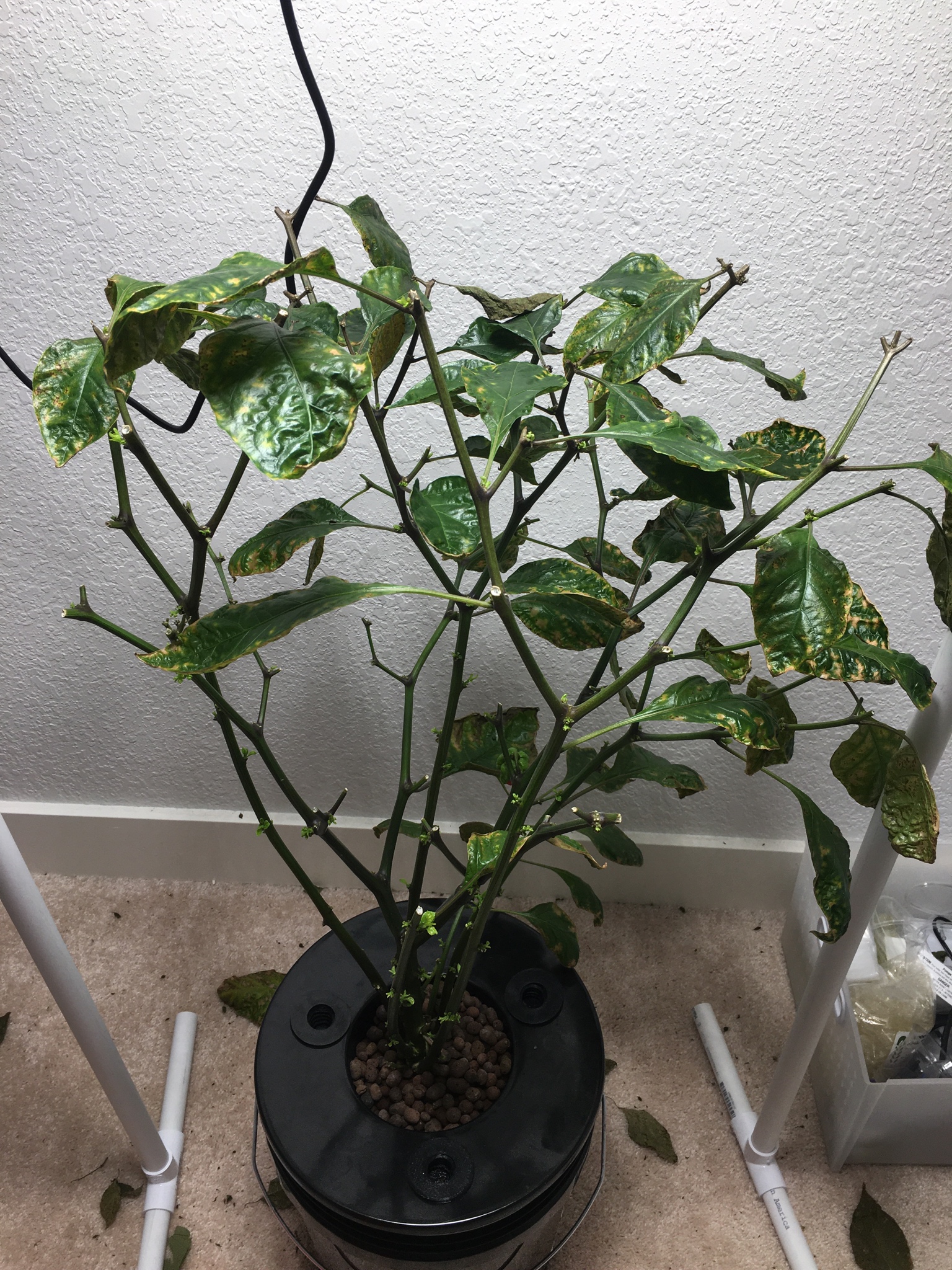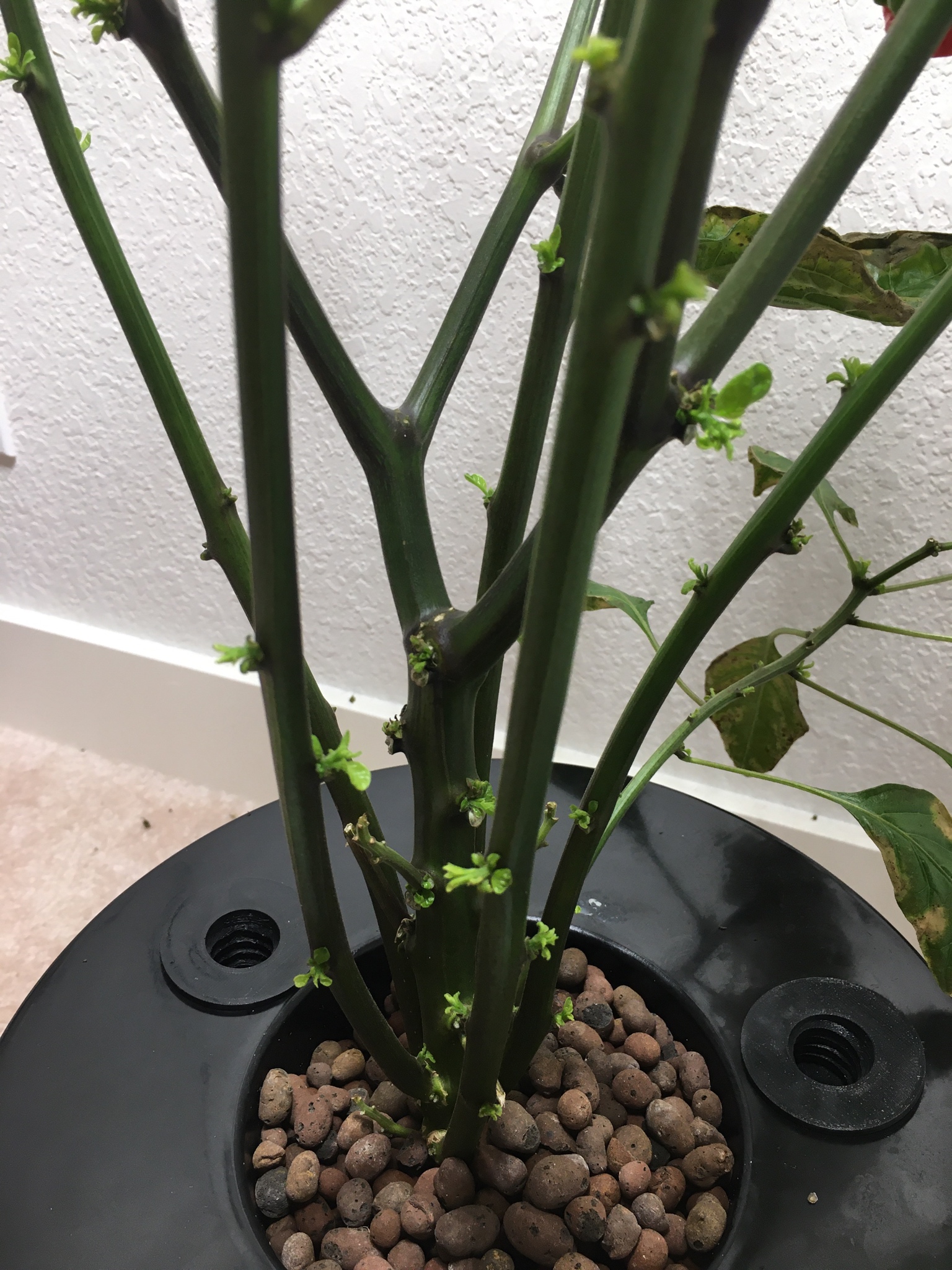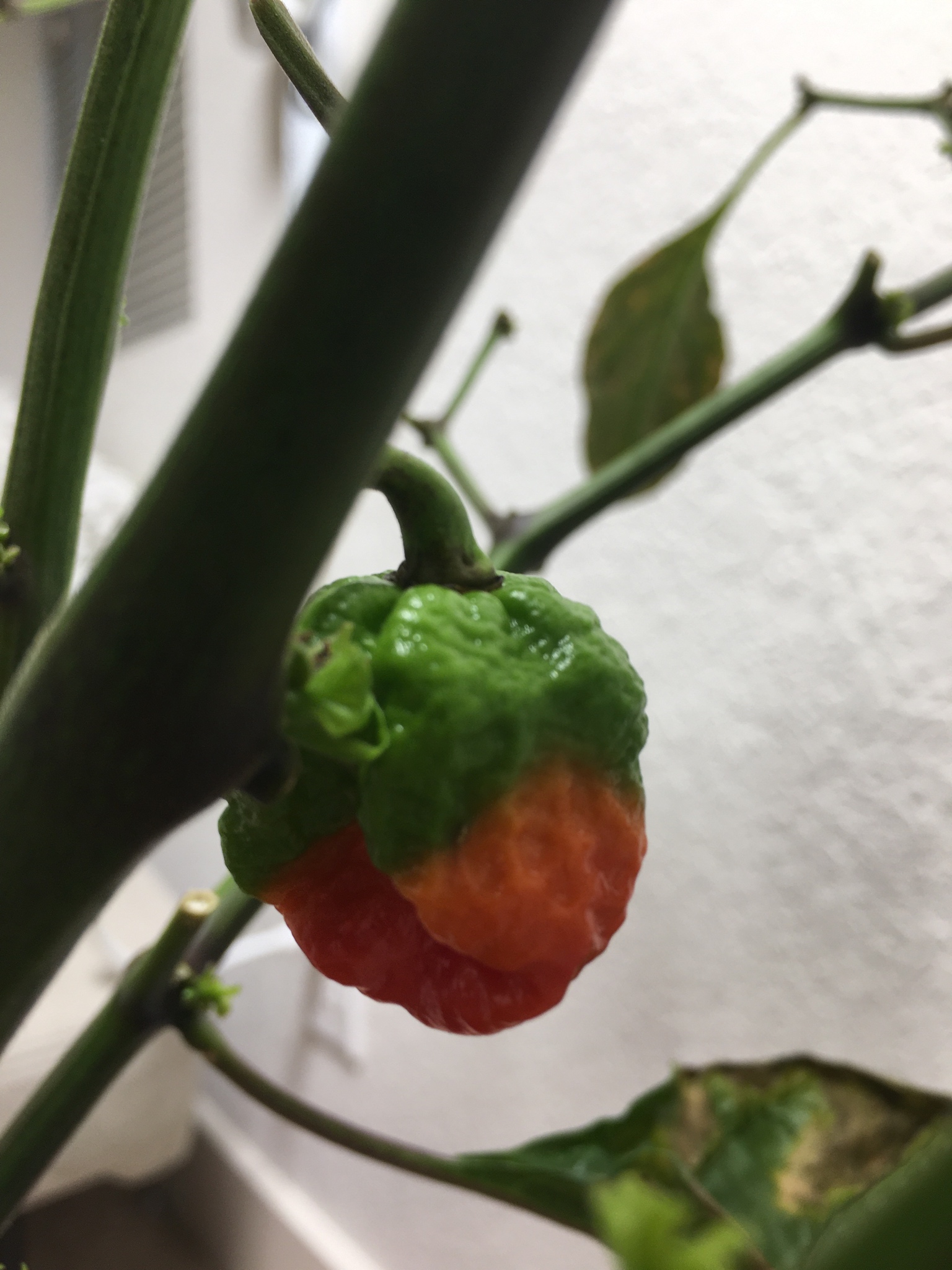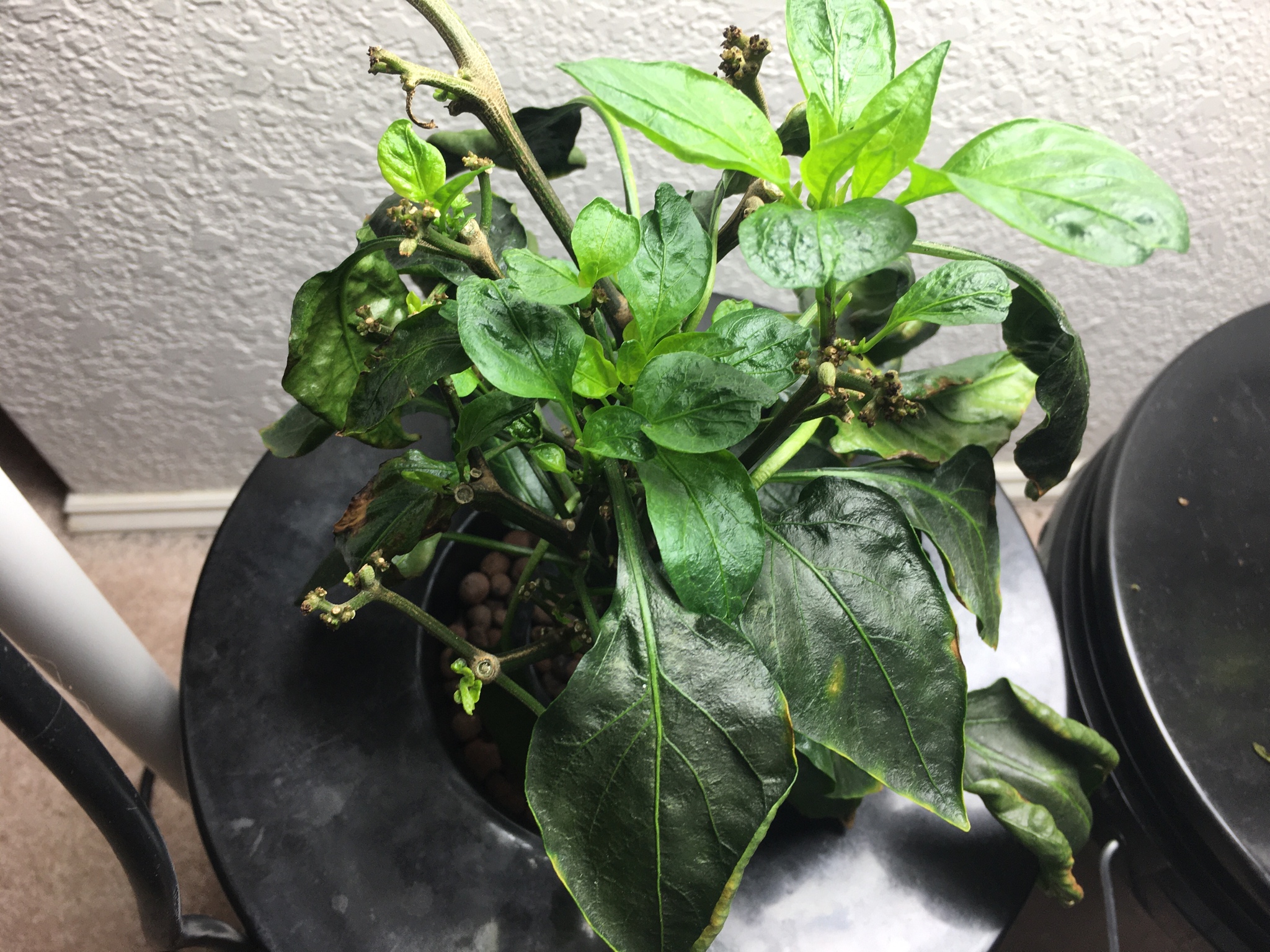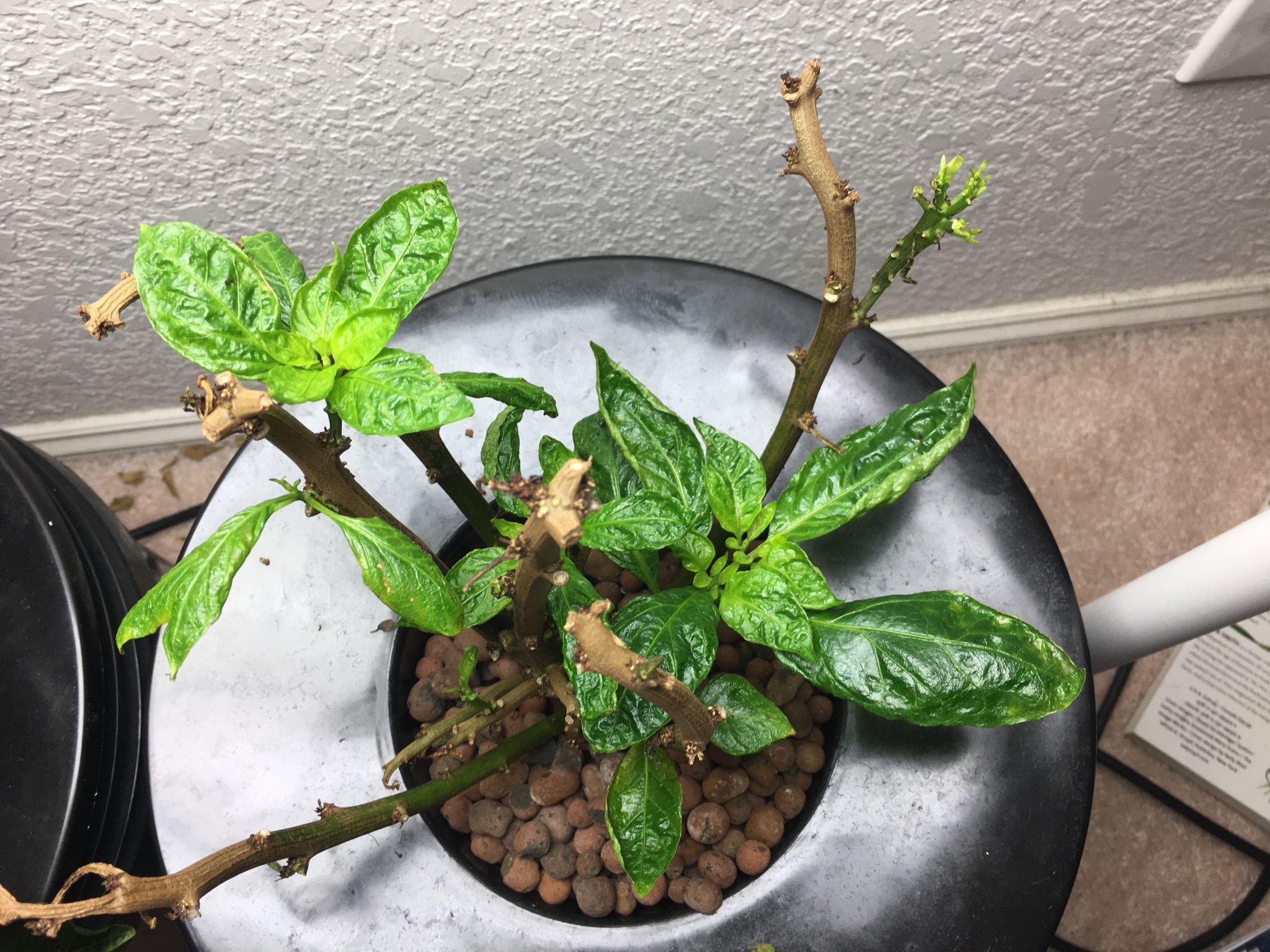Well here it is - after a two year hiatus, I decided to get myself a new grow light (HLG 100), grow peppers again and join this community.
I decided to it simple this year and grow fewer varieties from seeds I already have. These were packaged in 2014 or earlier so it will serve as a viability test as well.
After talking with my wife, we decided on the following 4 varieties
1 Super Hot:
Trinidad Moruga Scorpion. Seeds from the Chile Pepper Institute packaged in 2013.
1 Ornamental:
Numex Twilight. Seeds from the Chile Pepper Institute packaged in 2012.
2 Varieties for Cooking:
Jalafuego. Seeds from tomatogrowers.com. Packaged before 2014
Chiltepin. Seeds I collected after a trip to Texas in 2014.
I have the following goals for this season
The plan is as follows:
As the weather improves, I'll set up 1 Trinidad Scorpion and 1 Jalafuego in 5 gal Kratky bucket outdoors. I'll also clone as many plants as I can get away with and put them in soil containers outside.
That's it for plans…
Here's the actual progress so far
12/20/2019 -
• Started soaking Chiltepin seeds in a weak solution of chamomille tea
• Planted Trinidad Moruga Scorpion, Jalafuego and Numex Twilight seeds in rockwool cubes. 2 seeds of each per cube. Placed on a heat mat inside an airtight container with some water on the bottom for moisture
12/21/2019
• Planted Chiltepin seeds
• 3 rockwool cubes with seeds soaked in weak chamomille tea solution for about 25 hours
• 3 rockwool cubes with seeds soaked in 9 parts water, 1 part bleach solution for 5 minutes
12/23/2019
• Noticed a hook in one of the Jalafuego cubes
12/26/2019
• Hooks on all 3 Jalafuego cubes
• One Twilight cube has a hook
12/27/2019
• Hooks on all 3 Twilight cubes. One of them is a bit leggy
• Noticed one Chiltepin seed starting to sprout, from the cube that was soaked in bleach
• Transferred Jalafuego and Twilights to the light and gave them some food, General Hydroponics mild vegetative solution
12/28/2019
• One Jalafuego cube has 2 seedlings, new hook came out.
12/29/2019
• One Chiltepin hook coming out of the cube. Moved the cube to the light
• All 6 Jalafuego seeds have sprouted. 3 seedlings are now upright and 3 hooks are coming out. Germination rate is 6/6
12/30/2019
• Hook from Trinidad Moruga Scorpion came out. Moved to light
1/1/2020
• Hook from Chiltepin seed in bleach solution. Moved to light
• Hook from Chiltepin seed in chamomile tea came out. Moved to light
1/2/2020
• Last Twilight sprouted. Germination rate is 6/6
• Two more Trinidad Moruga Hooks
1/3/2020
• Moved two Trinidad Moruga cubes to light
1/5/2020
• Another Trinidad Moruga sprouted. Germination rate is 4/6
1/7/2020
• Roots from Jalafuego, Twilight and Chiltepin started poking through the bottom of the rockwool cubes. Moved the best plants to their own individual kratky container. Using Mild Vegetative solution from Flora 3 Part solution
• One T5 bulb died. Changed the light to the HLG 100.
1/9/2020
• New Trinidad Moruga Sprouted. Germination Rate: 5/6
• Added an air stone to the Jalafuego Kratky container turning it into a DWC.
1/10/2020
Thanks for reading all of this... I'll be posting some pictures soon!
I decided to it simple this year and grow fewer varieties from seeds I already have. These were packaged in 2014 or earlier so it will serve as a viability test as well.
After talking with my wife, we decided on the following 4 varieties
1 Super Hot:
Trinidad Moruga Scorpion. Seeds from the Chile Pepper Institute packaged in 2013.
1 Ornamental:
Numex Twilight. Seeds from the Chile Pepper Institute packaged in 2012.
2 Varieties for Cooking:
Jalafuego. Seeds from tomatogrowers.com. Packaged before 2014
Chiltepin. Seeds I collected after a trip to Texas in 2014.
I have the following goals for this season
- Get a decent batch of "hot" Jalapenos. You have to be lucky to find a hot Jalapeno at the store. We plan to pickle them to be used in NACHOS
- Incorporate Chiltepin peppers in our cooking (salsas, tacos, etc)
- Make some powder with the Trinidad Scorpion Peppers. I've made Ghost Pepper Powder before and it's amazing in stuff like Pho.
- Experiment with DWC and Kratky for peppers. My experience is with Dutch Buckets.
- Experiment with outdoor hydroponics. Success here means I'll be able to plant more peppers in future years
- Try crossing peppers. Always been curious, never really tried it. This year, it's happening.
- Growing a Trinidad Scorpion in my office at work. Dare my boss to try one…
The plan is as follows:
- 1 Trinidad Scorpion and 1 Jalafuego in 5 gal DWC indoors.
- Grow 1 Chiltepin and 1 Numex Twilight indoors in smaller Kratky containers.
- Grow 1 Trinidad Scorpion in a 5 gal DWC at work
As the weather improves, I'll set up 1 Trinidad Scorpion and 1 Jalafuego in 5 gal Kratky bucket outdoors. I'll also clone as many plants as I can get away with and put them in soil containers outside.
That's it for plans…
Here's the actual progress so far
12/20/2019 -
• Started soaking Chiltepin seeds in a weak solution of chamomille tea
• Planted Trinidad Moruga Scorpion, Jalafuego and Numex Twilight seeds in rockwool cubes. 2 seeds of each per cube. Placed on a heat mat inside an airtight container with some water on the bottom for moisture
12/21/2019
• Planted Chiltepin seeds
• 3 rockwool cubes with seeds soaked in weak chamomille tea solution for about 25 hours
• 3 rockwool cubes with seeds soaked in 9 parts water, 1 part bleach solution for 5 minutes
12/23/2019
• Noticed a hook in one of the Jalafuego cubes
12/26/2019
• Hooks on all 3 Jalafuego cubes
• One Twilight cube has a hook
12/27/2019
• Hooks on all 3 Twilight cubes. One of them is a bit leggy
• Noticed one Chiltepin seed starting to sprout, from the cube that was soaked in bleach
• Transferred Jalafuego and Twilights to the light and gave them some food, General Hydroponics mild vegetative solution
12/28/2019
• One Jalafuego cube has 2 seedlings, new hook came out.
12/29/2019
• One Chiltepin hook coming out of the cube. Moved the cube to the light
• All 6 Jalafuego seeds have sprouted. 3 seedlings are now upright and 3 hooks are coming out. Germination rate is 6/6
12/30/2019
• Hook from Trinidad Moruga Scorpion came out. Moved to light
1/1/2020
• Hook from Chiltepin seed in bleach solution. Moved to light
• Hook from Chiltepin seed in chamomile tea came out. Moved to light
1/2/2020
• Last Twilight sprouted. Germination rate is 6/6
• Two more Trinidad Moruga Hooks
1/3/2020
• Moved two Trinidad Moruga cubes to light
1/5/2020
• Another Trinidad Moruga sprouted. Germination rate is 4/6
1/7/2020
• Roots from Jalafuego, Twilight and Chiltepin started poking through the bottom of the rockwool cubes. Moved the best plants to their own individual kratky container. Using Mild Vegetative solution from Flora 3 Part solution
• One T5 bulb died. Changed the light to the HLG 100.
1/9/2020
• New Trinidad Moruga Sprouted. Germination Rate: 5/6
• Added an air stone to the Jalafuego Kratky container turning it into a DWC.
1/10/2020
- Moved another Jalafuego to its own Kratky container
Thanks for reading all of this... I'll be posting some pictures soon!

